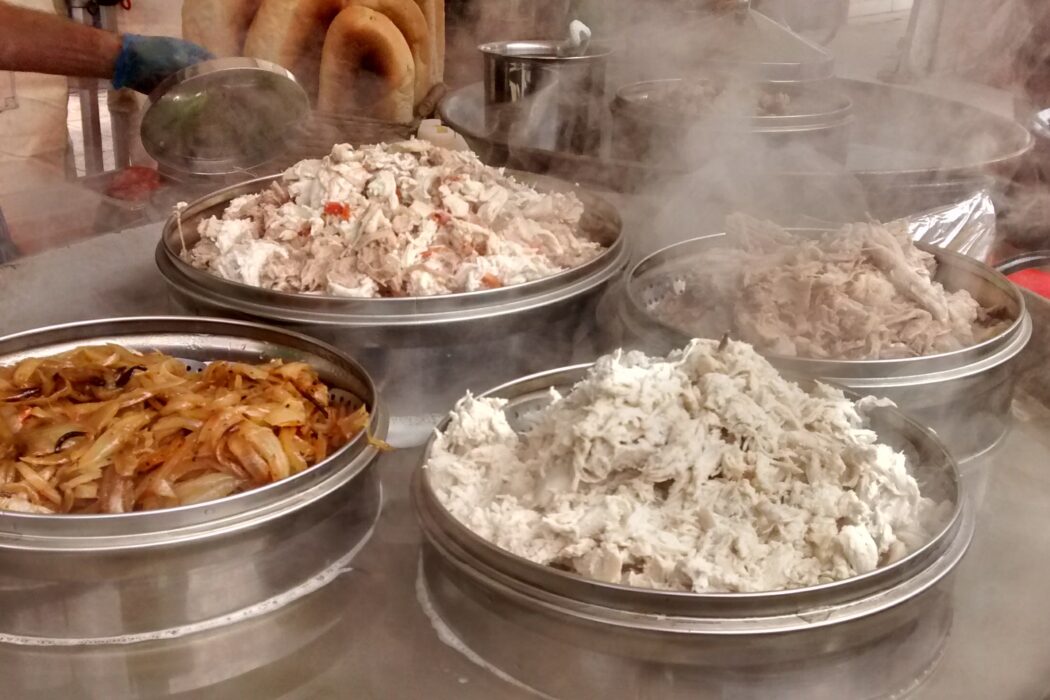This is the third in our series of guides to setting up a street food stall. You can read part one about getting things off the ground here and part two about making your stall a success here.
Now, you’ve taken your street food business from concept to real world trading. You’re at the market, you’re cooking incredible food, your stall looks great and life feels filled with promise. When you’re finished you go home… so now what do you do?
Easy – go online and tell everyone!
Like most businesses, social media can be one of the most important tools to help promote what you do, why you do it and what makes it unique. But how do you go about making social media work for you?
What accounts do I need?
There are loads of social media sites and apps out there. The three we tend to use are Facebook, Twitter and Instagram. Each has its own uses and drawbacks, and each has its own distinct audience – here’s a brief summary.
Facebook – The main advantage of Facebook is the number of functions it has. You can write posts of any length, include links to a website, add photos and videos, create events and plenty of other things. There are also quite a few drawbacks, the main one being that it can take a while to build up an audience on Facebook unless you’re willing to invest money in promoting posts. Even with a decent number of ‘likes’ on your page, many of your posts won’t reach all of your followers without a payment. However, another big advantage is that most people have access to Facebook so it will often be people’s first port of call when looking up your business.
Twitter – The pros of Twitter are how direct and shareable it is – posts allow a small amount of text alongside photos, videos and links, which can then be easily shared by countless other users. The main limitation is that anything you post will most likely have a brief shelf life before it disappears from other people’s feeds.
Instagram – The obvious benefit of Instagram is that it focuses on imagery. For a food trader, having some good shots of your products means Instagram is a handy tool to build a following. The drawbacks are that any accompanying text is very much secondary, so if you’re trying to convey anything beyond what can be seen in your photo, it’s unlikely to hit home here. You also can’t include live links on posts, meaning directing people to external websites can require some effort.
Which social media channels you choose, and how much attention you pay towards them, will be different for each street food business and the individuals behind it. Our advice is to have an account on each of those three platforms, and aim to post regularly but not constantly.
But what should you post? Here’s some tips.
Add value
People will stop paying attention if your content becomes repetitive or dull, so post things of interest that add value. Insider information, like behind the scenes images and stories, will keep people hooked. Photos and video do particularly well. Pick out the interesting things you do and give a sense of why you love your work. This could be during your prep for the market, when working on a new product, snaps on the day from your stall, talking points with customers.
Interact
Social media is an arena for conversation so don’t just give the hard sell. Think about what will get your customers talking. Asking a question is a great way to get a reaction, and don’t forget to reply to any comments you get – it’s just as important to interact in this way as it is to post out standalone content.
Be personal
Social media is more informal than a website, email or a piece of printed marketing. When we post on our social media channels, we don’t use personal names when we tweet or refer to ‘I’ or ‘me’. Instead use ‘we’, ‘our’ and ‘us’. Refer to your customers as ‘you’ – talk directly to them – they don’t bite!
Visuals matter
With so much noise on social media using eye-catching photos and video can help make your posts stand out and get the attention they deserve. If your phone contract is due for renewal, now is the time to be thinking about camera quality. Vibrant colours, candid moments, your product up close, the face of your business – all of these work well. Try and make sure your pics are all well composed, in focus and the central subject clear – and that any video isn’t too shaky. Landscape shots work best on Twitter and Facebook, portrait shots work best for both Instagram stories and feed posts.
Hashtags
We use hashtags especially on Instagram to help new audiences discover our content and therefore the market. It helps people who might not have heard of us stumble across our content. Instagram posts with at least one hashtag average 20% engagement more than a post with no hashtags – they are worth using. Take a look at our feed to see some of the ones we use then add ones that are also relevant to your business. Worth saying you can use hashtags on Twitter too but we’d suggest not going heavy with them on this platform as you want your tweets to be easy to read and you to have as many characters to work with. Remember you cannot use punctuation in hashtags.
Reposting
We like to repost as much of your content as we can. So if tag us (mentioning @LevyMarket) in your posts we’ll get a notification and more likely to repost your content.
Posting times
To optimise the time spent on social media marketing, to get the best reach, engagement and impact, it’s worth thinking about the times you post out content. Peak times can include the morning commute – 7:30am to 9am, lunchtime – 12noon to 2pm, after work commute/tea time – 5pm to 7pm, weekend morning 9:30-11:00, weekday and weekend evening – 8pm to 10pm.
Stay credible
There is nothing wrong with disagreeing with people online but be polite and don’t pick fights. And don’t let spelling or grammatical standards slip. We’re less likely to re-post your content if it’s full of typos. Avoid using stock photos, screenshots of images or content unrelated to your business.
Have fun
Don’t be afraid to be playful and inject humour into your social media activity. The more fun you have with your content and messaging the more fun our customers will have sharing and engaging with it. We find a conversational and light-hearted tone works best for our audience.
Talking points
All of the above may sound all well and good, but very often you may find you’re stuck for what to say on social media. So, by way of example, here are few of the starting points we use when talking on social media about Levenshulme Market:
Levy Market – Who we are
● A community hub that likes to support other local businesses, groups and
organisations
● A champion for shopping local and independent
● A social enterprise – not for profit
● A great place to meet people
● A great place to shop and eat
● Eco-friendly and ethical in our business approach
● Run by local people passionate about Levenshulme
Our USP – what makes us different
● We are one of only a small handful of social enterprise markets in the country
● We aim to provide a social, community-focused experience to our customers,
not just a place to shop
● We provide social and economic value to Levenshulme
● We do so much more than just run a market – we benefit the local area
● Our market FEELS special. Customers and traders regularly tell us that
Levenshulme Market is friendly, sociable and a lovely place to spend time
When thinking about our customers, consider the following:
● Do they have a family and want a local place to spend time and meet their
friends on a Saturday?
● Are they young professionals with a new home to furnish and money to spend
on artwork, plants etc?
● Do they like to be the first to discover new street food places or hidden gems
such as Levenshulme Market?
● Do they consider it important to shop locally and sustainably?

